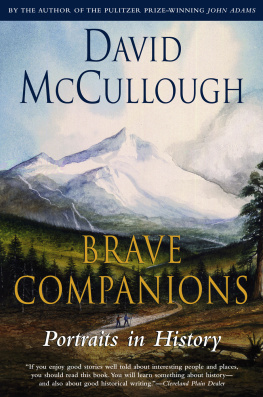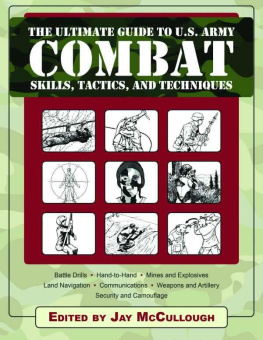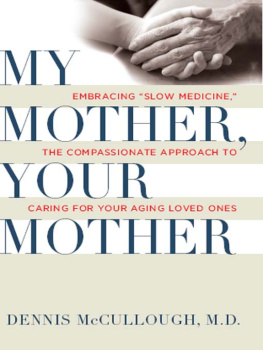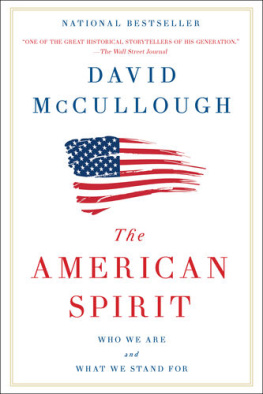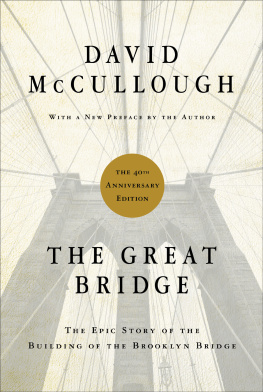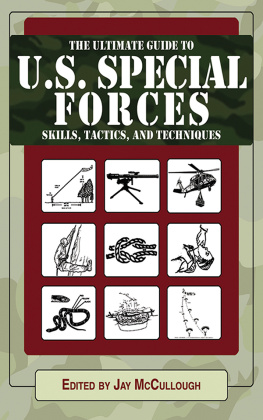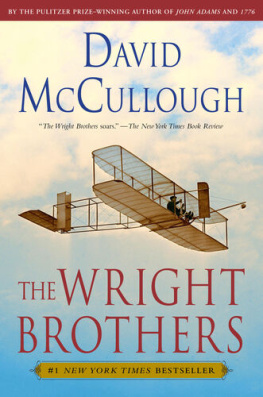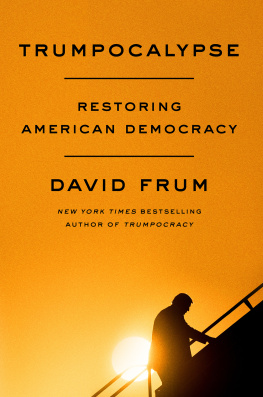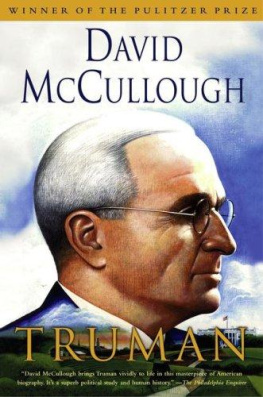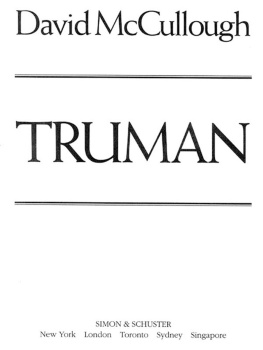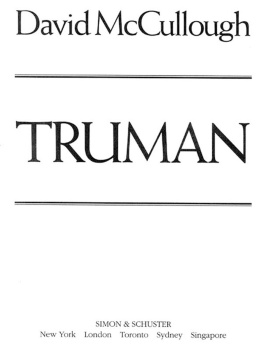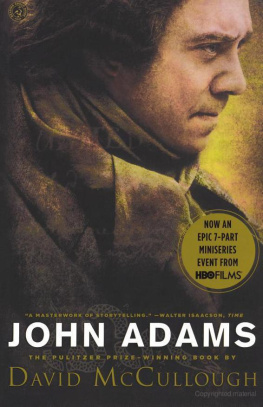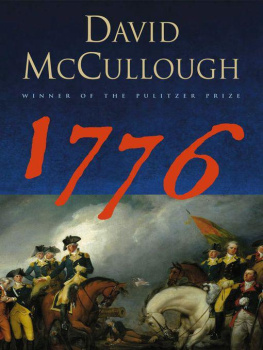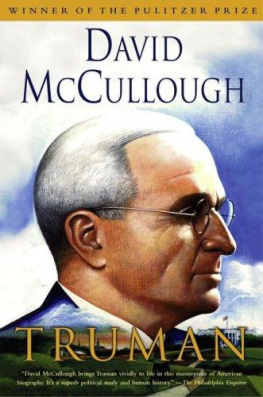We have no better social historian.
The New York Times
READ THE COMPLETE DAVID MCCULLOUGH COLLECTION

A narrative tour de force... expert research and detailed, graceful prose. Publishers Weekly

Combines a novelists sense of drama with a scholars meticulous attention to the historical record. The New York Times

Rich in revealing anecdotes and penetrating insights. The Washington Post

A full account of Roosevelts rise to manhood... full of irrepressible vitality. The Denver Post
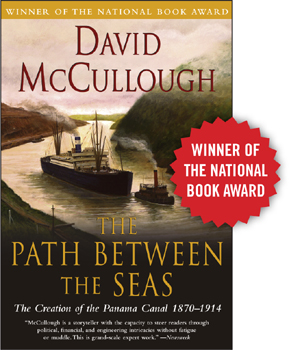
Full of giant-sized characters and rich in political skullduggery. The New York Times
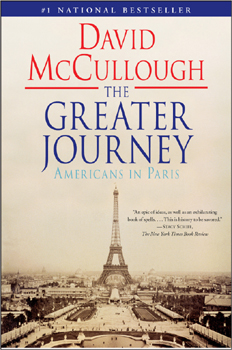
It will entice a whole new generation of Francophiles. San Francisco Chronicle

That sort of work which brings us to the human center of the past. Los Angeles Times
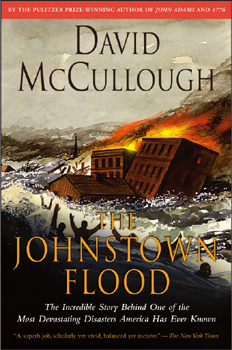
A first rate example of the documentary method. The New Yorker
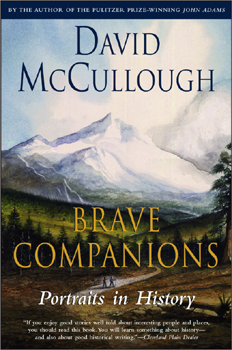
If you enjoy good stories well told about interesting people and places, you should read this book. The Plain Dealer (Cleveland)
DOWNLOAD YOUR COPIES TODAY!
Visit DavidMcCullough.com

Thank you for downloading this Simon & Schuster eBook.
Join our mailing list and get updates on new releases, deals, bonus content and other great books from Simon & Schuster.
C LICK H ERE T O S IGN U P
or visit us online to sign up at
eBookNews.SimonandSchuster.com
Contents
For Rosalee Barnes McCullough
Introduction
T HERE IS a story that goes with the painting of Theodore Roosevelt by John Singer Sargent that hangs in the White House.
Sargent, it is said, had been waiting about the mansion for several days, hoping for a chance to see the president and talk to him about doing his portrait, when one morning the two met unexpectedly as Roosevelt was descending the stairway.
When might there be a convenient time for the president to pose for him, Sargent asked.
Now! said the president.
So there he is in the painting, standing at the foot of the stairs, his hand on the newel post. It is a great portrait, capturing more of the subtleties of the Roosevelt personality than any ever done of him.
And its a good story. Moments come and go, the president was telling the painter. Here is the time, seize it, do your best.
My earliest ambition was to be an artist. When I was ten or so, our art teacher at Linden School in Pittsburgh, Miss Mavis Bridgewater, demonstrated two-point perspective on the blackboard, and it seemed to me a miracle. I dont think I would have been much more amazed had she caused her desk to levitate.
I began to draw and paint. At Yale later, though an English major, I studied under an artist named Dean Keller, who, because of the rather old-fashioned portraits he did (largely for the university of its prominent professors) and his insistence on understanding anatomy, was anathema in a department then dominated by Joseph Albers, the German cubist known for his paintings of squares. I wanted to be a portrait painter.
As a writer I am still drawn to the human subject, to people and their stories, more often than to large current issues or any particular field of academic inquiry. The explorer interests me more than geography, the ichthyologist more than his fish, Theodore Roosevelt before, say, the Progressive Movement.
Nor have I ever been able to disassociate people or stories from their settings, the background. If character is destiny, so too, I believe, is terrain.
Seeing how the light falls in a marble room on Capitol Hill, or smelling the coal smoke in the air on a winter night in Pennsylvania, helps in making contact with those who were there before in other days. Its a way to find them as fellow human beings, as necessary as the digging you do in libraries.
At times Ive not known for certain whether I wanted to go ahead with a story until I have been where it happened.
The sun was scorching hot and we should have had hats, but we dipped our hands in the water and the farther we went the cooler it got and especially when we hit the rapids, I read now in a letter I wrote to my wife from Panama years ago, after a first reconnaissance of the Chagres River wilderness made in a dugout canoe with two young sons, two Cuna Indians, and an American hydrologist, Frank Robinson, who knew the names of every tree, most birds and insects, and all about the stupendous cycle of Panama rainfall. A day or two in such country goes far in stirring your sympathy and admiration for those intrepid souls, the pioneer builders, who came there in the last century, first to build a railroad.
Surroundings are essential to contemporary subjects no less. To spend time with someone like Miriam Rothschild in the fervently bizarre atmosphere of the family estate north of London, for example, or to follow David Plowden through the cornfields and small towns of Illinois, is for me the only way to see them clearly.
So the portraits here are often figures in a landscape.
Most of these essays were written for magazines. That they might one day be companion pieces in a book was a thought that never occurred at the time. Each was an individual undertaking. Several of them, for reasons personal or professional, had to be done on short notice, Now, as Roosevelt said. They were produced over a period of nearly twenty years, at very different times in my life, and about subjects as dissimilar as Alexander von Humboldt and Conrad Richter. Two of the stories, one set in Panama, the other in the Badlands of North Dakota, resulted from research I was doing for books. Another represents a return to a subject I had already covered in a book, but about which I found I had some new things to say. It was written as a way of honoring the 100th birthday of the Brooklyn Bridge.
In the final section, Ive included two speeches written for such different occasions as a college commencement in Vermont and the ceremonies celebrating the bicentennial of the United States Congress.
Next page
